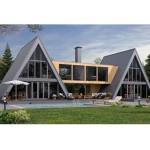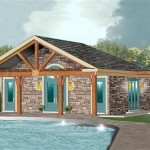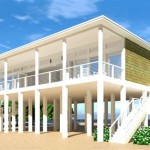Design House Floor Plans To Suit Your Lifestyle Room Keyword
Designing a house floor plan is a complex undertaking that extends far beyond aesthetics. It involves a deep understanding of the future residents' lifestyles, their needs, and how they intend to use each space within the home. A well-conceived floor plan can significantly enhance the quality of life, while a poorly designed one can lead to persistent frustration and inconvenience. Tailoring a floor plan to suit a specific lifestyle revolves around the concept of a "lifestyle room," which represents a space designed and optimized for a particular activity or set of activities central to the occupants' lives.
The concept of a lifestyle room emphasizes functionality and personalization over simply adhering to traditional room designations. Instead of just having a "living room," consider creating a "family entertainment room" equipped with integrated audio-visual systems, comfortable seating, and storage for games and media. Similarly, a "home office" could be transformed into a "creative studio" with ample natural light, adjustable workspaces, and specialized storage for art supplies or crafting materials. The process of identifying and designing lifestyle rooms is a critical component of creating a home that truly reflects and supports the occupants’ daily routines and passions.
Understanding Lifestyle Needs and Prioritizing Spaces
The initial step in designing a floor plan that complements a specific lifestyle involves a thorough assessment of the occupants' needs and priorities. This requires a structured approach to identify key activities, routines, and preferences. Consider the following questions:
What are the primary activities that the occupants engage in regularly? This could include cooking, entertaining, working from home, exercising, pursuing hobbies, or spending time with family. Identifying these activities will help determine the types of lifestyle rooms that are most relevant.
What are the specific requirements of each activity? For example, if cooking is a central activity, a spacious and well-equipped kitchen with ample counter space, storage, and specialized appliances may be necessary. If working from home is prevalent, a dedicated home office with ergonomic furniture, reliable internet access, and privacy from distractions is critical.
How do the occupants interact with each other and with guests? Consider the need for open-concept living spaces that facilitate social interaction versus private areas for individual activities. Also, determine the frequency and scale of entertaining to determine the optimal size and layout of dining and living areas.
What are the long-term needs and potential lifestyle changes? Consider factors such as aging in place, the potential for expanding a family, or the need for future workspace. Incorporating flexibility and adaptability into the floor plan can ensure that the home remains suitable for years to come.
Once these needs are identified, prioritizing spaces becomes essential. This involves allocating square footage based on the relative importance of each activity. For example, if the occupants are avid cooks, dedicating a larger portion of the floor plan to the kitchen and pantry may be warranted, even if it means reducing the size of other spaces. The prioritization process should reflect the reality of how the occupants intend to live in the home, rather than adhering to arbitrary standards or preconceptions.
Optimizing Room Placement and Traffic Flow
The placement of rooms within the floor plan and the flow of movement between them are crucial considerations that significantly impact convenience and functionality. Strategic placement can enhance privacy, reduce noise pollution, and optimize access to natural light and ventilation. Effective traffic flow ensures seamless movement throughout the home, minimizing congestion and bottlenecks.
Consider the relationship between activity zones. For example, the kitchen should ideally be located near the dining area and the main living space to facilitate meal preparation and socializing. Bedrooms should be grouped together in a quieter area of the home, away from high-traffic areas such as the entrance hall or the kitchen. A mudroom or entry area should be strategically located near the main entrance to serve as a buffer between the outdoors and the interior living spaces.
Pay attention to the orientation of the house in relation to the sun. South-facing rooms typically receive more natural light and warmth, making them ideal for living areas and bedrooms. East-facing rooms are well-suited for kitchens and breakfast nooks, while west-facing rooms can be prone to overheating in the afternoon. Consider incorporating shading devices such as awnings, overhangs, or landscaping to mitigate the effects of solar heat gain.
Effective traffic flow involves minimizing long, straight hallways and creating clear pathways between frequently used spaces. Consider incorporating wider hallways and doorways to accommodate mobility aids or strollers, and ensure that there are adequate turning radii in hallways and bathrooms. Avoid placing furniture or fixtures in areas that obstruct the flow of movement. Strategically placed windows and doorways can also enhance the sense of openness and connectivity between rooms.
Furthermore, think about sound transmission between rooms. Bedrooms and home offices should be located away from noisy areas such as the kitchen or entertainment room. Consider incorporating soundproofing materials such as insulation, acoustic panels, or solid-core doors to minimize noise pollution. Strategic placement of closets and storage areas can also help to buffer sound transmission.
Integrating Technology and Adaptability
Modern lifestyles are increasingly intertwined with technology, and a well-designed floor plan should incorporate provisions for seamless integration of electronic devices and smart home systems. Furthermore, the floor plan should be adaptable to changing needs and future upgrades, ensuring that the home remains functional and relevant for years to come.
Consider the placement of electrical outlets, data ports, and charging stations throughout the home. Ensure that there are adequate outlets in each room to accommodate electronic devices, and consider installing USB charging ports in convenient locations such as bedside tables and kitchen islands. Plan for the placement of entertainment systems, including televisions, speakers, and gaming consoles, and ensure that the wiring is concealed and organized.
Smart home systems can enhance convenience, security, and energy efficiency. Consider incorporating features such as smart lighting, thermostats, security systems, and automated window coverings. Plan for the placement of control panels and sensors, and ensure that the wiring is properly installed and concealed. Consider using a centralized control system that allows the occupants to manage all of the smart home features from a single interface.
Adaptability is a crucial consideration for long-term functionality. Consider incorporating flexible spaces that can be easily reconfigured to accommodate changing needs. For example, a spare bedroom could be used as a home office, a guest room, or a playroom. Consider installing walls that can be easily moved or removed to create larger or smaller spaces. Incorporate universal design principles to ensure that the home is accessible to people of all ages and abilities. This could include features such as wider doorways, grab bars in bathrooms, and ramps or elevators.
Furthermore, consider the potential for future upgrades and renovations. Ensure that the floor plan allows for easy access to plumbing and electrical systems. Consider incorporating flexible wiring systems that can be easily upgraded to accommodate new technologies. Plan for future expansion by leaving room for additions or renovations in the floor plan. By incorporating these considerations, you can ensure that your home remains functional and relevant for years to come.
The thoughtful design of a house floor plan, particularly focusing on the concept of "lifestyle rooms," is essential for creating a living space that truly enhances the occupants' quality of life. By understanding their needs, optimizing room placement, and integrating technology and adaptability, a floor plan can be tailored to support the unique rhythms and passions of those who will call it home. This approach prioritizes functionality and personalization, moving beyond traditional room designations to create spaces that are specifically designed to facilitate the activities and routines that are central to the occupants' lives. The result is a home that is not only aesthetically pleasing but also deeply functional and perfectly suited to the lifestyle of its inhabitants.

Floorplan Rules Where To Put All Your Rooms For The Best Layout And Flow A Big River House New Build Update Emily Henderson

Floorplan Rules Where To Put All Your Rooms For The Best Layout And Flow A Big River House New Build Update Emily Henderson

Floorplan Rules Where To Put All Your Rooms For The Best Layout And Flow A Big River House New Build Update Emily Henderson

How To Design A House From Sketch Reality

Gorgeous Guest House Floor Plans Interior Design Ideas Alisha Taylor

Gorgeous Guest House Floor Plans Interior Design Ideas Alisha Taylor
The New Home Design That Best Suits Your Needs Renaissance Homes

Plan 430006ly 4 Bed Modern House With Upstairs In Law Suite

Rethinking Your House To Get The Extra Living Space You Need Now Walk Id

Treasure Island Construction Blog How To Decide On A Floor Plan
Related Posts








